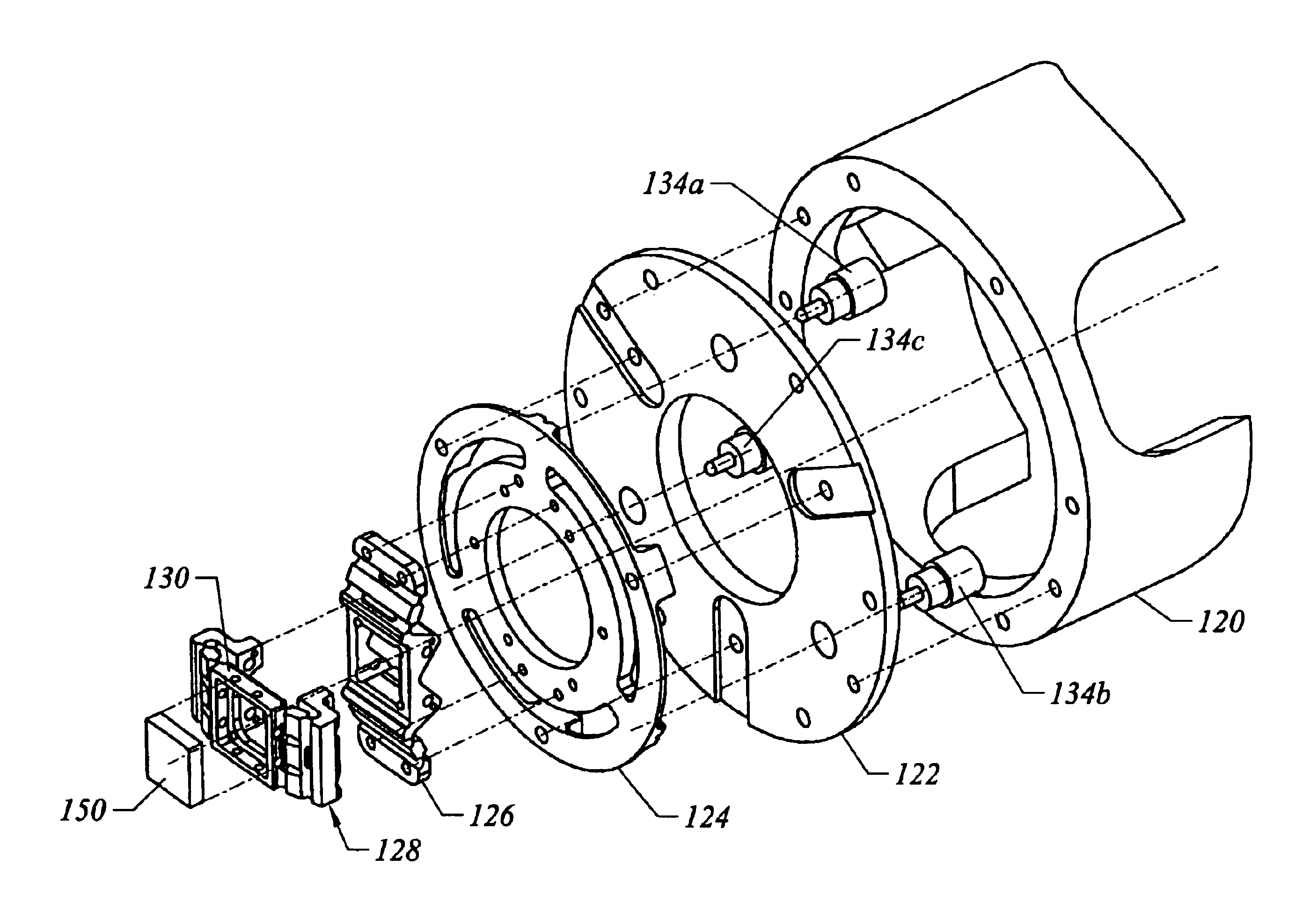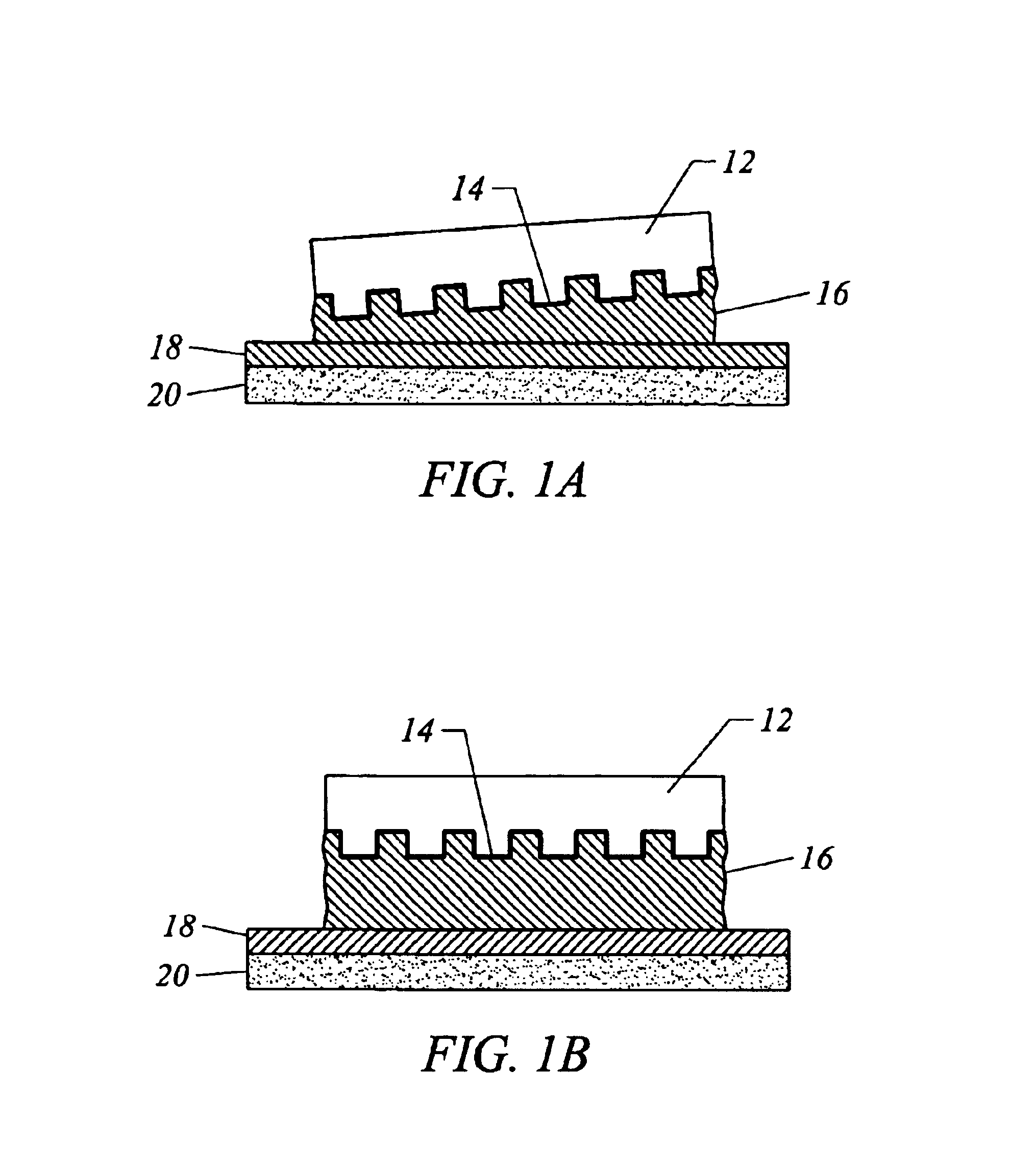High precision orientation alignment and gap control stages for imprint lithography processes
a technology of imprint lithography and orientation alignment, which is applied in the field of small device manufacturing, can solve the problems of loss of overlay alignment registration, high undesirable, and prior art patents that do not disclose designs with the necessary high stiffness, and achieve the effect of reducing manufacturing cycles
- Summary
- Abstract
- Description
- Claims
- Application Information
AI Technical Summary
Benefits of technology
Problems solved by technology
Method used
Image
Examples
Embodiment Construction
Without limiting the invention, it is herein described in connection with a system, devices, and related processes for imprinting very small features (sub-100 nanometer (nm) range) on a substrate, such as a semiconductor wafer, using methods of imprint lithography. It should be understood that the present invention can have application to other tasks such as, for example, the manufacture of cost-effective Micro-Electro-Mechanical Systems (or MEMS), as well as various kinds of devices including patterned magnetic media for data storage, micro optical devices, biological and chemical devices, X-ray optical devices, etc.
With reference now to the figures and specifically to FIGS. 1A and 1B, therein are shown arrangements of a template 12 predisposed with respect to a substrate 20 upon which desired features are to be imprinted using imprint lithography. Specifically, the template 12 includes a surface 14 that has been fabricated to take on the shape of desired features which, in turn, a...
PUM
| Property | Measurement | Unit |
|---|---|---|
| aspect ratio | aaaaa | aaaaa |
| force | aaaaa | aaaaa |
| of rotation | aaaaa | aaaaa |
Abstract
Description
Claims
Application Information
 Login to View More
Login to View More - R&D
- Intellectual Property
- Life Sciences
- Materials
- Tech Scout
- Unparalleled Data Quality
- Higher Quality Content
- 60% Fewer Hallucinations
Browse by: Latest US Patents, China's latest patents, Technical Efficacy Thesaurus, Application Domain, Technology Topic, Popular Technical Reports.
© 2025 PatSnap. All rights reserved.Legal|Privacy policy|Modern Slavery Act Transparency Statement|Sitemap|About US| Contact US: help@patsnap.com



